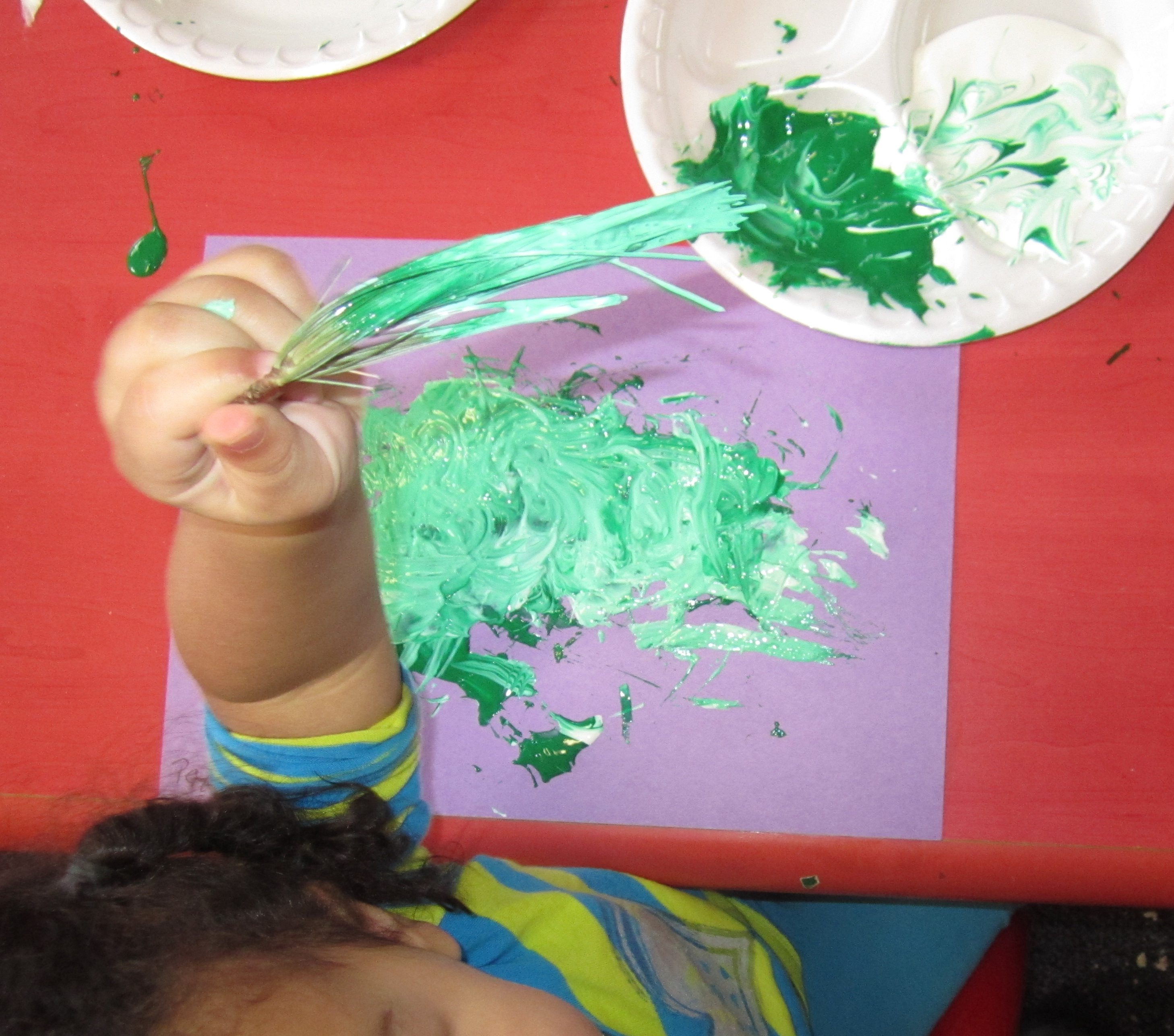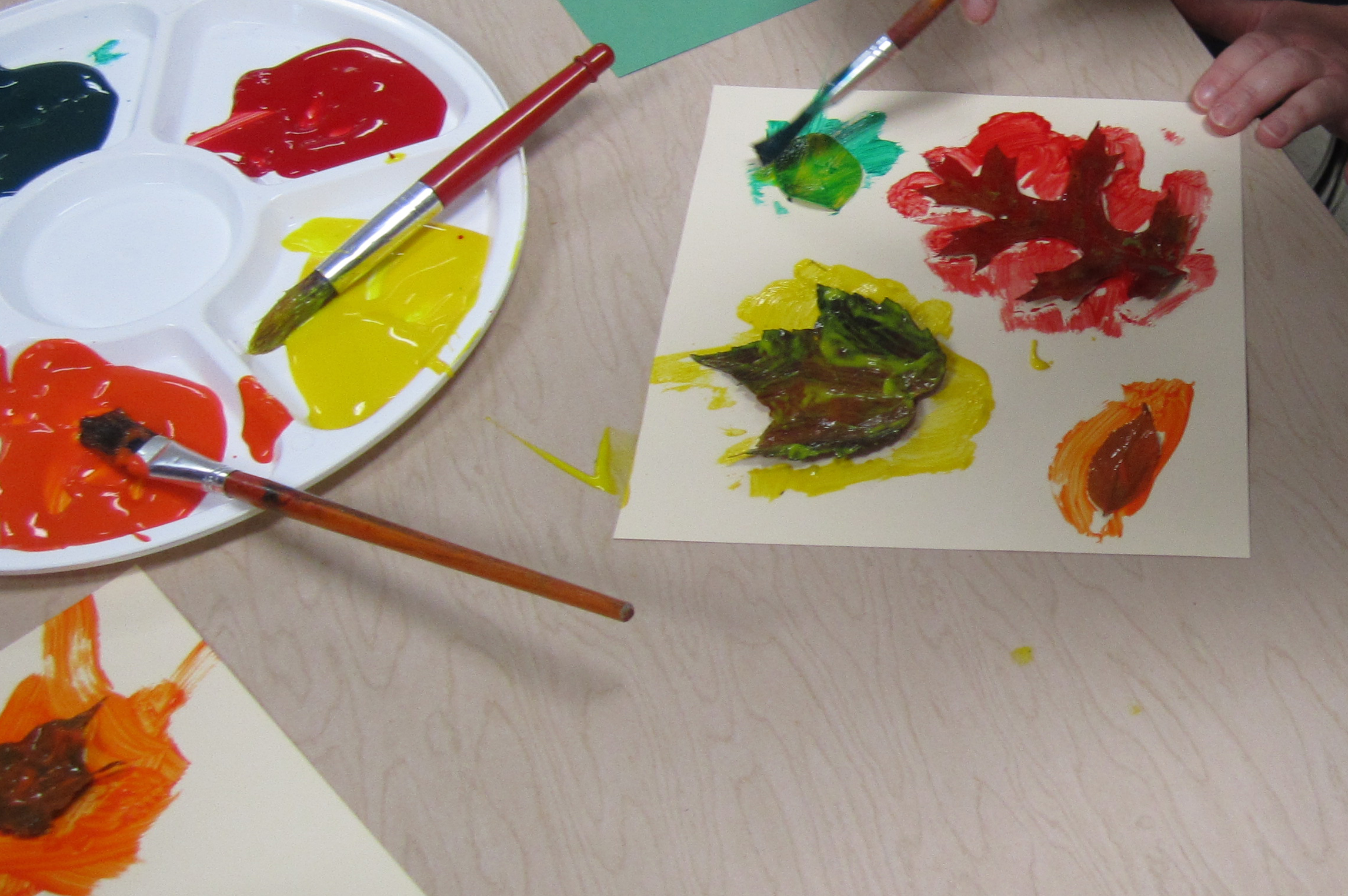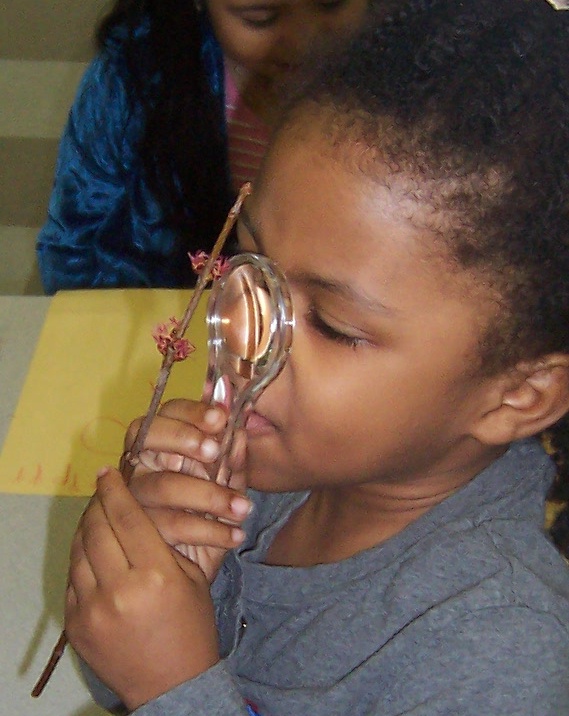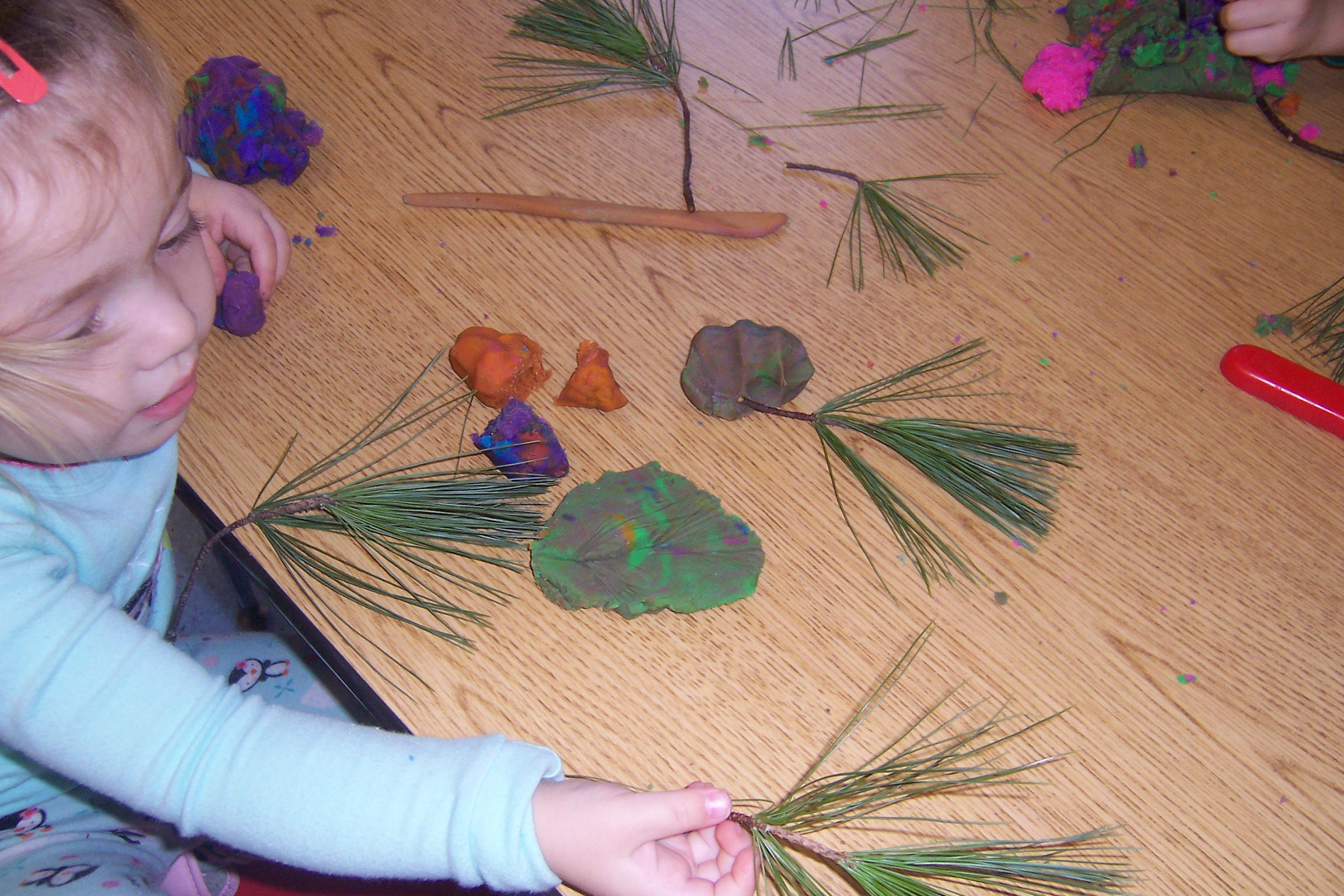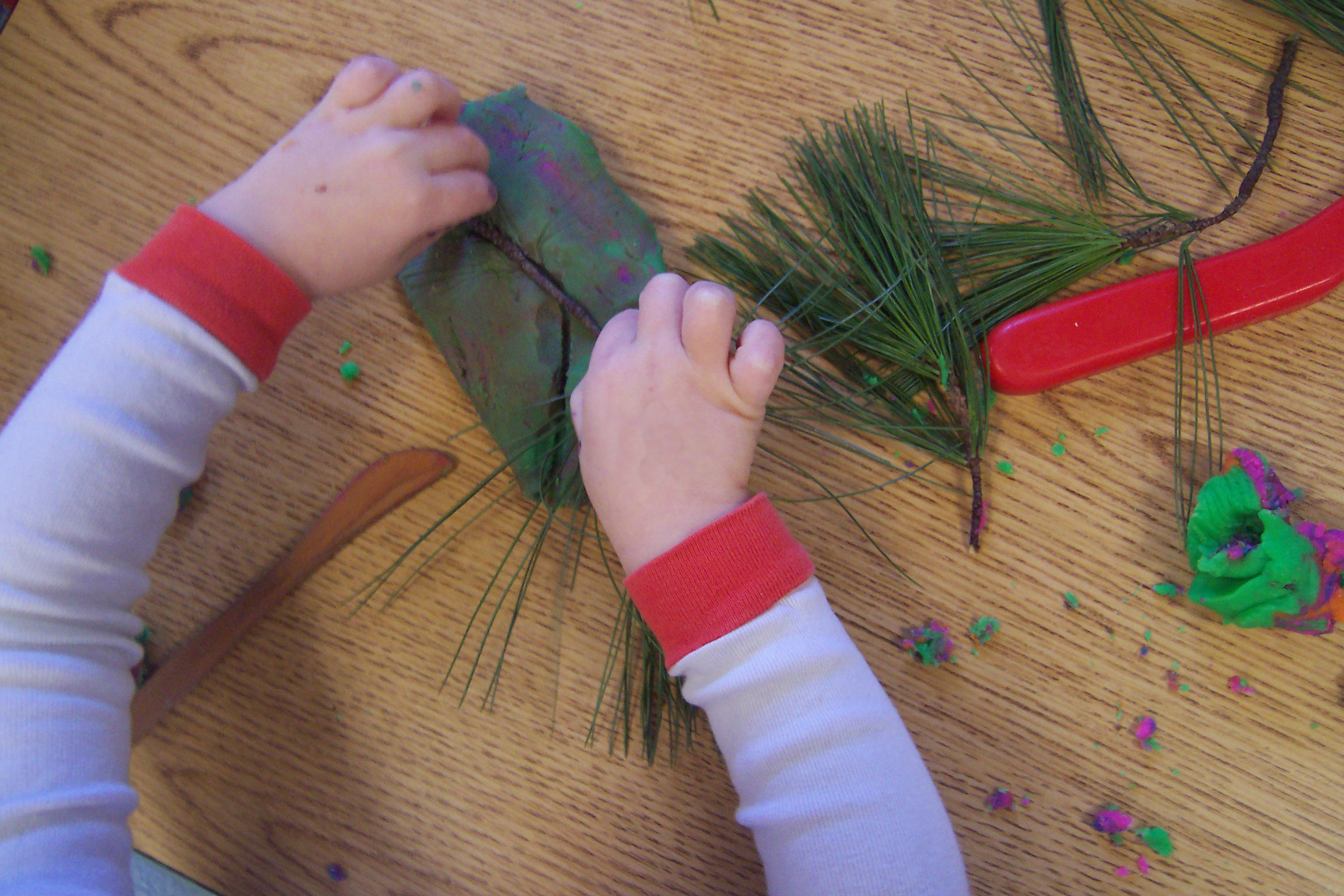Becoming familiar with leaves
By Peggy Ashbrook
Posted on 2015-10-07
A photo shared with a social media group—leaves bound to a stick to create a paintbrush—raised memories of children engaging with leaves in many ways. Thank you to Gill Robertson of Teddy Bear Day Care in Manitoba for sharing this interesting way to explore leaves. Using leaves in art activities is a way to draw children’s attention to the parts of plants, how they are used by the plant and how we can use them.
While acronyms such as “STEM” and “STEAM” are useful for reminding us to include all areas of investigation and learning in the curriculum we teach, they also may seem to exclude areas not listed. Children don’t see the world as separate “silos” of engaging experiences or divisions of knowledge. They will not limit themselves to learning in a single curriculum area as they explore leaves. I like the image that “Braided Curriculum” brings to mind. Wayne Watkins and Jeffrey Bock of the University of Hawai‘i at Manoa Children’s Center write about the strands of their curriculum. Let’s braid science, technology, engineering, math, social skills, art, and all the rest into our curriculum.
 An inquiry into the needs of plants can begin with walking through a garden. The fun of grabbing and pulling off the lower leaves is difficult to resist so when we are walking in the garden, I urge children to use “one gentle finger” to touch the plants. (I remember the fun of stripping the leaves off the willow branches of a tree at my childhood home.) We also sniff leaves and look closely with magnifiers. The children see the leaves as part of the plants, parts that can be discarded and grow again. Once a tree is “no longer using a leaf” and it’s fallen to the ground, we can do more—tearing, crumpling, cutting, painting, gluing….
An inquiry into the needs of plants can begin with walking through a garden. The fun of grabbing and pulling off the lower leaves is difficult to resist so when we are walking in the garden, I urge children to use “one gentle finger” to touch the plants. (I remember the fun of stripping the leaves off the willow branches of a tree at my childhood home.) We also sniff leaves and look closely with magnifiers. The children see the leaves as part of the plants, parts that can be discarded and grow again. Once a tree is “no longer using a leaf” and it’s fallen to the ground, we can do more—tearing, crumpling, cutting, painting, gluing….
When I shared Gill’s idea with early childhood friends, they said:
Cool!
I’ve also used paintbrushes that are simply the branches of the trees, especially evergreen, cut into appropriate lengths.
Very cool. I saw something similar made with pine needles.
Love it! We could use pine needles or dandelions too…
Here are some ways to engage children closely with the function, feel, size, shape, structure, and use of plant leaves. As teachers of children who may still use their sense of taste, we choose the leaves carefully to limit them to non-toxic plants. These photos are of work in my program and in others.
These sometimes-brief encounters with leaves teach a little bit about the structures of leaves and needles, and the variety of shapes and sizes–science and math.
Disclaimer: The views expressed in this blog post are those of the author(s) and do not necessarily reflect the official position of the National Science Teaching Association (NSTA).





